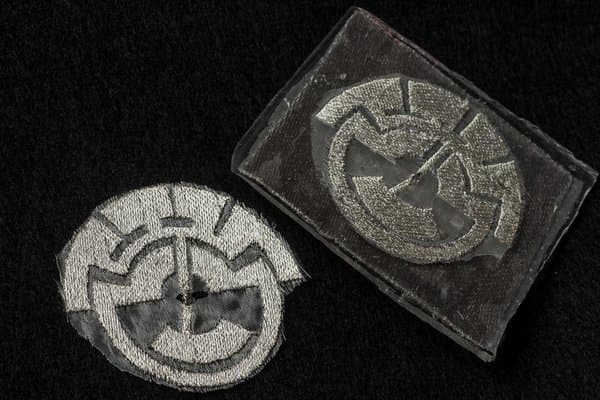New Breakthrough In Wearable Electronics Might Make It Possible For Clothes To Exchange Digital Info
This is a perfect example of the blending of two different disciplines, namely electronics and fashion technology. The latest study allows electronic fabrics to be stitched to your clothes. A research group from the Ohio State University has managed to realize artificial memory devices and sensors of 0.1 mm precision that can be easily embedded in contemporary dresses.
The new generation has already witnessed wearable electronic accessories like smart watches, belts and fitness trackers that regulate different supporting events surrounding a person. This time, the team has gone one step ahead by weaving a textile based technology that can easily pass and gather digital information much like sci-fi cyborgs. The team hopes that with some modifications, this new type of garments will be able to track the fitness level, sync smart devices and finally monitor the internal activities of brain.

Embroidered Antennas
Volakis, a Professor of Electrical Engineering at the Ohio State University has tagged this step as an engineering revolution in the textile industry. In the lab, these functional textiles have set new records in terms of accessibility and data processing. Named as “e-textiles†the team has created a prototype version using a simple tabletop sewing machine. In pretty much the same way, it embroiders threads into the fabric all by itself by typically matching a preloaded computerized design. However, the only difference from the traditional method is that the team replaced conventional thread by a very thin silver wire.
The team explained that the geometrical structure of an embroidery determines the frequency of operation of the antenna. The geometrical knots work as the function of application and differs from one application to the other. 7 filaments, each bearing a 0.1 mm diameter silver enameled copper wires were used to sew the cloth. Once, it was sketched, experiments proved that the setup works with full efficiency. As for example, a spiral antenna could measure approximately six inches across transmitted signals at frequencies of 1 to 5 GH which also indirectly recommends the usage of this particular configuration for broadband and cellular data transmission.
The project has successfully passed its first phase and is gearing up to work for its next phase. The work is partnered and supported by the Advanced Functional Fabrics of America Institute, Syscom Advanced Materials, Elektrisola and is funded by the National Science Foundation. The complete research report was published in the IEEE Antennas and Wireless Propagation Letters
Source: <a href="https://news.osu.edu/news/2016/04/13/computers-in-your-clothes-a-milestone-for-wearable-electronics/" target="_blank" rel="nofollow noopener noreferrer">Computers in your clothes? A milestone for wearable electronics</a>
The new generation has already witnessed wearable electronic accessories like smart watches, belts and fitness trackers that regulate different supporting events surrounding a person. This time, the team has gone one step ahead by weaving a textile based technology that can easily pass and gather digital information much like sci-fi cyborgs. The team hopes that with some modifications, this new type of garments will be able to track the fitness level, sync smart devices and finally monitor the internal activities of brain.

Embroidered Antennas
Volakis, a Professor of Electrical Engineering at the Ohio State University has tagged this step as an engineering revolution in the textile industry. In the lab, these functional textiles have set new records in terms of accessibility and data processing. Named as “e-textiles†the team has created a prototype version using a simple tabletop sewing machine. In pretty much the same way, it embroiders threads into the fabric all by itself by typically matching a preloaded computerized design. However, the only difference from the traditional method is that the team replaced conventional thread by a very thin silver wire.
The team explained that the geometrical structure of an embroidery determines the frequency of operation of the antenna. The geometrical knots work as the function of application and differs from one application to the other. 7 filaments, each bearing a 0.1 mm diameter silver enameled copper wires were used to sew the cloth. Once, it was sketched, experiments proved that the setup works with full efficiency. As for example, a spiral antenna could measure approximately six inches across transmitted signals at frequencies of 1 to 5 GH which also indirectly recommends the usage of this particular configuration for broadband and cellular data transmission.
The project has successfully passed its first phase and is gearing up to work for its next phase. The work is partnered and supported by the Advanced Functional Fabrics of America Institute, Syscom Advanced Materials, Elektrisola and is funded by the National Science Foundation. The complete research report was published in the IEEE Antennas and Wireless Propagation Letters
Source: <a href="https://news.osu.edu/news/2016/04/13/computers-in-your-clothes-a-milestone-for-wearable-electronics/" target="_blank" rel="nofollow noopener noreferrer">Computers in your clothes? A milestone for wearable electronics</a>
0
